Part I, To 1948
"So far from being persecuted, the Arabs have crowded into the country
[Palestine] and multiplied till their population has increased."
— Winston Churchill in 1938
"[T]he Arab immigration into Palestine since 1921 has vastly exceeded
the total Jewish immigration during this whole period."
— Franklin Delano Roosevelt in 1939
Famously, Jewish immigration to the Land of Israel, called aliyah, is centuries old and took on an organized form in 1882. Described as "the central goal of the State of Israel" (in the words of Prime Minister Ariel Sharon), it provides the demographic basis on which the entire Zionist enterprise rests. Both very public and highly controversial, it has inspired millions of Jews to move to territories now under Israeli control.

Much less famously, a large and diverse non-Jewish immigration to Palestine (meaning here, roughly Gaza, the West Bank, and the northern half of the State of Israel), mostly Muslim, has also taken place. These immigrants included Arabs, Muslims, and many others. They and their descendants probably make up a majority of the population now called Palestinian. Palestinians, in other words, are not an aboriginal, autochthonous, first, indigenous, or native people; most of them are as recently arrived as Zionists. They are also as ethnically diverse.
The scale of this non-Jewish immigration was once well known, as the Churchill and Roosevelt quotes above indicate. It has, however, long since disappeared from view, replaced by a fable about a homogeneous people living on the land since the deepest antiquity.
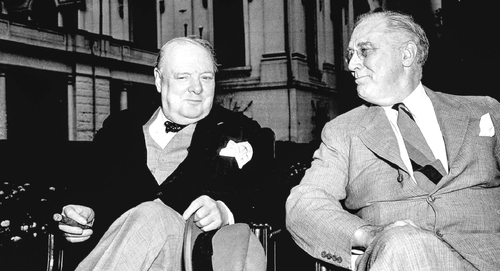 Churchill and Roosevelt in May 1943. |
This article seeks to restore the historical record by reviewing non-Jewish immigration to Palestine during the century from the 1840s until the creation of Israel in 1948; then it examines the fairytale that displaced that record. A second article will take up non-Jewish immigration since 1948 to the State of Israel.
Military Background
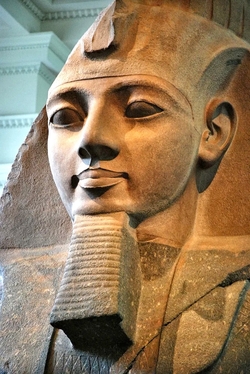 Pharaoh Ramses II. |
Located at the crossroads of Asia and Africa, of desert and sown, of land and sea, containing holy places for multiple faiths, Palestine has come under unceasing attack. In addition to countless tribal raids and assaults by petty princes, the region suffered such notable invaders as Pharaoh Ramses II, Alexander the Great, Caliph Umar ibn al-Khattab, King Richard the Lionheart, the Mongol Kitbuqa, the Ottoman Selim the Grim, Napoleon, General Edmund Allenby, and Gamal Abdel Nasser.
Jerusalem's history exemplifies this history of conquest. "No other city has been more bitterly fought over throughout its history," observes Eric H. Cline of George Washington University. He counts "at least 118 separate conflicts in and for Jerusalem during the past four millennia" and calculates Jerusalem was completely destroyed at least twice, besieged 23 times, captured 44 times, and attacked 52 times. Another calculation, by U.S. military historian John D. Hosler, finds 20 attacks on Jerusalem during the 630 years between 614 and 1244, every 31.5 years, or about once each generation.
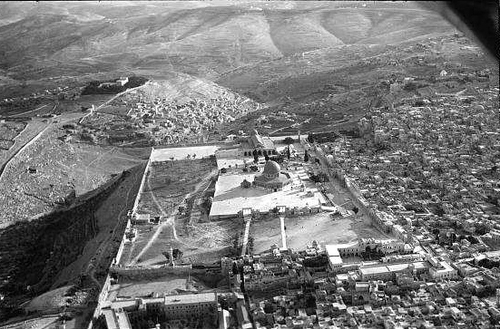 At least 118 separate conflicts in and for Jerusalem over the past four millennia; shown here in 1931. |
Many invaders brought new cohorts of settlers, thereby adding new strata of population. For example, after Egypt's conquest of Palestine in 1831, 6,000 Egyptian peasants moved to Palestine. Significantly, they maintained a cultural distinctiveness across nearly two centuries. The German Philip Baldensperger, a long-time resident of Palestine, observed in 1913 that "we find entire villages of Egyptians all along the plains of the Philistines, from the river of Egypt [i.e., the Nile]* to Jaffa, – descendants of those of 1831, and who continue unmixed." In 2013, Israeli scholars Gideon Kressel and Reuven Aharoni noted that their descendants still "have not assimilated entirely into the local Arab population." The same applies to several other communities, notably the Circassians.
This centuries-long retention of ethnicity has political implications. As Israeli historian Moshe Dann explains, Palestinians "have little in common, and are merely a collection of tribes and clans that are often at war with each other." The Hamas vs. Palestinian Authority confrontation offers one example of this; another is the continuous internecine fighting, often clan based, among peoples living on the West Bank.
Ottoman Province
Non-Jewish immigration to Palestine took off in the 1840s as a result of two main economic developments. First, the region's Ottoman rulers encouraged commercial activity by building modern infrastructure such as paved roads, railroads, ports, and telegraphs. Market agriculture began (for example, in wheat and oranges), the government created a public-school system, and entrepreneurs founded banks. The German historian Alexander Schölch estimates that during the 1850s, Palestine had a population of about 350,000, roughly 85 percent of whom were Muslim, 11 percent Christian, and 4 percent Jewish.
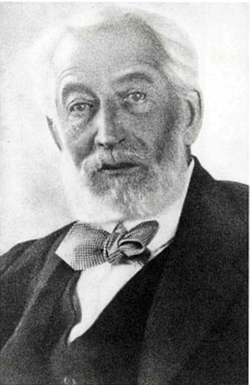 Edmond de Rothschild (1845-1934). |
Such regional movement was generally unrestricted because, through the end of Ottoman rule in 1917, Palestine had no administrative definition nor boundaries but made up a small part of a large empire. Indeed, this movement of peoples fit into a larger context; "before the signing of international agreements that defined national boundaries that restricted the migratory streams," Kressel and Aharoni explain, the Middle East saw "an immense amount of travel."
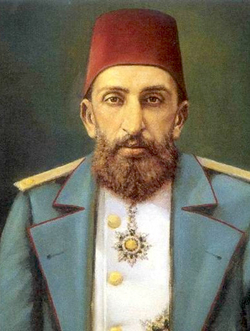 Sultan Abdülhamid II (1842-1918). |
The influx of European settlers, even in small numbers, galvanized the Ottoman government also to move to increase the Muslim dominance in the population. The sultan purchased some lands in his own name and brought in Muslim settlers from places as diverse as Algeria, Egypt, Bosnia, and the Caucasus. If it were to develop into a demographic war, the Turks were not going to lose by default.
In contrast to Jewish immigrants, resented as foreigners and conspicuous as non-Muslims, Egyptians and other Middle Easterners were welcomed for their part in increasing the Muslim population.
British Mandate
Imperial British control in the years 1917-48 saw Palestine become an administrative unit, the quasi-colony called the Mandate for Palestine, defined as the familiar dagger-shaped territory still cherished by Palestinian organizations.
Motives for immigration: As in earlier decades, imperial and Zionist need for labor spurred further non-Jewish immigration. The British needed workers to build their infrastructure, such as military bases, and they (in Avneri's description) "preferred Egyptian, Syrian or other foreign laborers to the Jewish immigrant." This stimulated further non-Jewish immigration, which still encountered few obstacles to enter Palestine.
Booming Zionist economic activity attracted yet more Muslim workers, employed mostly in agriculture, building, and services. Joan Peters, author of a book on this topic, compares the non-Jewish population of the future mandate's territory in 1893 and 1947. Dividing it into three subregions according to the intensity of their Jewish settlement – none, some, and much – she finds that non-Jews increased over that period by, respectively, 116, 185, and 401 percent. In other words, many of today's Palestinians acquired that ethnicity via their contribution to the Zionist project. Officialdom both far away (such as Churchill and Roosevelt) or nearby understood this. Thus, C. S. Jarvis, British governor of the Sinai in 1922-36, noted the illegal Arab immigration coming not only "from the Sinai, but also from Transjordan and Syria." The price of real estate soared, with the British-sponsored Peel Commission reporting in 1937 that a "shortfall of land is, we consider, due less to the amount of land acquired by Jews than to the increase in the Arab population."
Egyptian immigration to Palestine increased after World War I, due in part to the jobs and the much higher standard of living, facilitated by improved security and transportation, especially a railroad link opened in 1918. Young men who successfully pursued opportunities in Palestine often sent for their families. In 1937, the Peel Commission heard that "There are Egyptians who are spread throughout Eretz-Israel, some of whom have made their sojourn permanent."
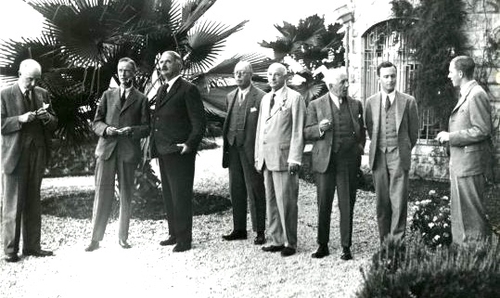 Members of the Peel Commission at the King David Hotel, Jerusalem, in November 1936. |
Jarvis pointed to the economic attraction of Zionism: "it is very difficult to make a case out for the misery of the Arabs if at the same time their compatriots from adjoining states could not be kept from going in to share that misery." Winston Churchill concurred: "Why is there harsh injustice done if people [Zionists] come in and make a livelihood for more and make the desert into palm groves and orange groves? Why is it injustice because there is more work and wealth for everybody? There is no injustice. The injustice is when those who live in the country leave it to be a desert for thousands of years." Confirming their views, the University of Illinois' Fred M. Gottheil documents (1) the universal human propensity to migrate toward greater economic opportunities, (2) the Palestinian pattern of doing precisely this, (3) and the greater economic opportunities in Palestine than in neighboring countries. He understatedly concludes that "consequential immigration of Arabs into and within Palestine occurred."
Of course, not all Muslim migrants came to work for Zionists; some came to assault them, including two famous leaders: Fawzi al-Qawuqji from Lebanon and Izz ad-Din al-Qassam from Syria; the latter's legacy remains alive, commemorated by Hamas as the name of its most important militia.
Provenance of immigrants: The authoritative Encyclopædia Britannica of 1911, written by Irish archeologist Robert Alexander Stewart Macalister, lists no less than 23 ethnicities under the "Palestine" entry: Afghan, Algerian, Armenian, Assyrian, Bedouin, Bosnian, Canaanite, Circassian, Crusader, Egyptian, German, Greek, Italian, Jewish, Kurd, Motawila,[1] Nowar,[2] Persian, Roman, Samaritan, Sudanese, Turkish, and Turkoman. Long as this list is, Macalister missed a number of ethnicities (including the Arabian, Chechen, Ethiopian, Iraqi, Lebanese, and Yemeni). He further found that "no less than 50 languages [were] spoken in Jerusalem as vernaculars."
Toponyms in common Palestinian surnames commemorate these origins. They include, going from west to east: al-Mughrabi (North Africa), al-Masri (Egypt), al-Yamani (Yemen), al-Hijazi (Saudi Arabia), al-Lubnani and al-Tarabulsi (Lebanon), al-Shami, al-Halabi, and al-Hourani (Syria), al-Iraqi, al-Baghdadi, and al-Tikriti (Iraq). The family name al-Ifranji, meaning "the Frank," even memorializes the Crusader colonizers.
Arabians are particularly conspicuous. The Jerusalem family called Al-Husseini claims to be descended from Hussein, the grandson of the Islamic prophet Muhammad, implying roots in Arabia; the two dominant Palestinian politicians of the twentieth century, Amin al-Husseini and Yasir Arafat (birth name: Mohammed Abdel Rahman Abdel Raouf Arafat al-Qudwa al-Husseini) belonged to this family. Saeb Erekat, a top Palestinian negotiator, belonged to the Huweitat clan from the vicinity of Mecca.
Numbers of immigrants: British authorities paid minute attention to Jewish immigration but nearly ignored its non-Jewish counterpart, making numbers about the latter vague. As an example of this uninterest, a severe shortage of workers attracted thousands of illegal Egyptian and other Arab laborers during World War II, many of whom settled permanently without the authorities paying them attention. A 1946 Survey of Palestine prepared for the Anglo-American Committee of Enquiry made no effort to estimate their numbers but vaguely noted that "inhabitants of neighboring countries, attracted by the high rates of wages offered for employment on military works, entered Palestine illegally in considerable numbers during the War." Even more vaguely, the report continues:
For example, in 1942, Egyptian labour was brought into southern Palestine by civilian contractors to the military forces without any agreement with the civil administration; these contractors were employed on the construction of camps and aerodromes. No estimates are available of the numbers of foreign labourers who were so brought into the country by contractors or who entered individually in search of employment on military works.
Peters rightly says of British rule, "there was not even a serious gauge for considering the incidence of Arab immigration" into Palestine.
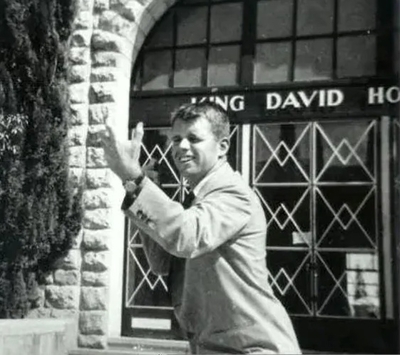 Robert F. Kennedy, also at the King David Hotel in Jerusalem in 1948. |
This massive movement of Middle Easterners accounts for some unexpected developments. First, it explains the United Nations' peculiar definition of Palestine refugees as "people whose normal place of residence was Palestine between 1 June 1946 and 15 May 1948 and who lost both home and means of livelihood as a result of the 1948 conflict." Requiring not even two years' residence implicitly acknowledged how many residents had only recently arrived. Thus did non-Jewish migration to Mandatory Palestine increase the number of "Palestine refugees" that fled the fighting in 1948-49; even today their descendants swell the official number of those "refugees."
 Fathi Hammad of Hamas. |
Palestinian Claims
Weirdly, the PLO narrative relies not on the Koran but on the Jewish Bible to establish that Palestinians have always inhabited the Land of Israel while Jews are strangers to it.
Canaanite origins: The PLO emphasizes that the Israelites under King David conquered Jerusalem from the Canaanites or their sub-tribe, the Jebusites in about 1000 BCE. Yasir Arafat spoke of "Our forefathers, the Canaanites and Jebusites" and with this staked a claim to antedating the Jews in Palestine. "We are the Canaanites," echoed his successor, Mahmoud Abbas. Others make similar claims. Ignoring his Arabian family origins, Saeb Erekat called himself "a son of Jericho, aged 10,000 years. ... I am the proud son of Canaanites, and I existed 5,000 years ago." So too Faisal Husseini, another top figure: "I am a Palestinian. I am a descendant of the Jebusites, the ones who came before King David."Outdoing them all, Palestinian National Council president Rawhi Fattouh stated that Palestinians lived in Palestine for more than 1.5 million years.
 Palestinian National Council president Rawhi Fattouh. |
Celebrated Columbia University professors piled on. Edward Said, in his capacity as a self-described "Canaanite," rued the Jewish conquest of Canaan as the malign inspiration for future rampages "from Indian-killing Puritans in New England to South African Boers claiming large swatches of territory held by Blacks." When Rashid Khalidi, Columbia's Edward Said Professor and an historian, served as president of the American Committee on Jerusalem, the organization claimed that "the majority of Palestinian Arabs are descendants of the ancient Jebusites and Canaanites."
To spread these novel ideas, the PA has sponsored historical reenactments such as one in Sebastia on the West Bank in 1996, witnessed by Israeli journalist Ehud Ya'ari:
Young people – in flowing robes tailored especially for the event, decorated with Canaanite motifs, on light wooden chariots built according to specifications from drawings found in the Megiddo excavations – made their way through Sabastia's narrow alleyways to a stone stage in the center of the village. There, they recreated the legend of Ba'al, the supreme Canaanite god, and his struggle with his brother Mut, god of the underworld. In the end, Ba'al emerged victorious with the help of his sister Anat, the goddess of war. The narrator of the text put special emphasis on the warning against the "Habiru" tribes (the Hebrews), who were moving into the land.
In like spirit, Jesus gets variously described as the first Palestinian martyr, a Palestinian messenger, or the great-grandfather of the Palestinian people.
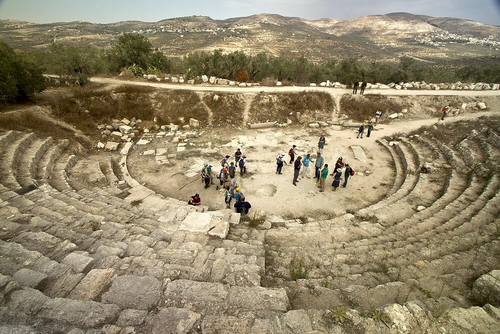 The Roman amphitheater at Sebastia. |
Exclusivity: In this account, Palestinians alone have lived on the land continuously and always made up a majority of the population. PA mufti Muhammad Hussein says they "have been firmly established upon this land [of Palestine] since the Canaanite era." Responding to an alleged quote by Israel's Prime Minister Benjamin Netanyahu that Jews have historical rights to the Land of Israel dating back to 3000 BCE, Abbas representative Abdullah al-Ifranji (note his name) retorted that "the people of Palestine have a history in the land of Canaan going back to 7000 BCE." PA textbooks repeat this claim, with a seventh-grade Arabic-language book stating, for example, that "Since the dawn of history the soil of Palestine has raised its Arab identity high through the giants of Canaan." PA supreme Shariah judge Mahmoud al-Habash, focuses on continuity in Jerusalem:
Our forefathers and historical lineage, the Jebusite Canaanites, built Jebus, Jerusalem, the City of Peace – the Canaanites called it the City of Peace – 5,000 years ago. Our presence in Jerusalem has not ceased for 5,000 years. Nations and occupations have passed through, and colonialism, whether brief or long. It came and left, but the people of Jerusalem stayed. These transients will move on, while the people of Jerusalem will stay. They have no place in Jerusalem. Jerusalem is ours, not theirs.
No Jews: Of course, all this implies an absence of Jews. Bakr Abu Bakr, a member of Fatah's Revolutionary Council, calls the historic "Children of Israel" an "Arab tribe that became extinct." As for present-day Israelis, Abbas portrays them as descendants of Khazar Turks with no historic connection to Palestine, but as European colonialists pretending to trace their lineage to the ancient Israelites to justify stealing Palestinian land. Jews twice stole Palestine, in ancient and modern times. They are the eternal, foreign aggressive interlopers who must be expelled. Remarkably, this drivel resounds from the halls of academe to the United Nations.
To summarize: ancestors of today's Palestinians arrived in the land of today's Israel long before the Jews, who anyway are extinct, and they have lived there continuously.
 Issam Amira. |
The people of Palestine have no historical right to Palestine. They have no right that dates back 2,000, 3,000, or 4,000 years. ... our history is simple and it is not ancient. Our history dates back only 1,440 [lunar] years [to the Battle of Yarmouk in 636 CE when Muslims conquered Palestine]. 1,440 years ago we had no rights of any kind. Absolutely none.
Amira says that when Arafat made his Canaanite claims, he "cursed his own people." Rather, "The only thing you are allowed to say is: Oh Palestinians, you are Muslims."[3]
Conclusion
Historians and archaeologists widely dismiss the Palestinian narrative. They find, Cline generalizes, that "most, if not all, modern Palestinians are probably more closely related to the Arabs of Saudi Arabia, Yemen, Jordan, and other countries than they are to the ancient Jebusites." Israeli journalist Pinhas Inbari adds that "not a single Palestinian tribe identifies its roots in Canaan; instead, they all see themselves as proud Arabs descended from the most notable Arab tribes of the Hejaz, today's Iraq, or Yemen."
That the ancestors of so many contemporary "Palestinians" immigrated from elsewhere undermines the narrative of an indigenous and cohesive ethnicity antedating Jews in the Land of Israel. It also substantially reduces the number of legitimate Palestine refugees.
Thus have Arafat, Abbas, et al. managed to hide the bothersome fact that most of today's self-described Palestinians descend from recent immigrants. This propaganda triumph also buries a startling imitation: Palestinians, like Israelis, represent the in-gathering of a far-flung religious community in the Holy Land. Two populations in parallel immigrated to one small territory, one defeated the other, and the vanquished refuses to give up.
Part II, Since 1948
"When I saw the Israeli soldiers, I nearly fainted from happiness. I fell on the floor and kissed the earth before their feet. It was as if I was born all over again. ... I saw a country that cared about its citizens, something that would not happen to such an extent even in Western cultures like the United States."
— Yusuf Samir
Introduction
No, the exuberant statement above was spoken not by a Jew making aliyah (lit. going up; fig. immigration to the Land of Israel) but by an Egyptian journalist and poet, Nabih Sirhan, who changed his name in Israel to Yusuf Samir to hide his identity. Samir likely has the distinction of being the only Muslim twice to flee for his life to Israel. He did so first in 1968 when, after criticizing Egyptian media inaccuracies, he fled the country and, via Libya and Greece, found refuge in Israel, working at Israel Radio's Arabic service, eventually becoming a citizen.
The second time took place in 2001, when the Palestinian Authority (PA) seized him and held him for seven weeks as a suspected Israeli "collaborator." Samir reported that he "was beaten non-stop." On release from the PA's tender mercies, he not only spoke of his own deep feeling for the Jewish state ("I place all my confidence in this small country, which I love from the bottom of my heart") but also spoke publicly about Israel's virtues (calling it "a land of love") and the Palestinians' deficiencies: "The Palestinians are animals. They are less than human. They are savage beasts. ... the Palestinians do not love. They hate. They should be destroyed."
 Yusuf Samir. |
Samir's double flight to Israel may be unique but it fits into a larger pattern, that of Muslims moving to what the Koran calls the Holy Land (al-Ard al-Muqaddasa). I call this Muslim aliyah. Neither celebrated nor condemned, individual in nature rather than organized, driven by practical goals rather than by idealism, and smaller than its Jewish counterpart, it is obscure, routine, important, and embarrassing. Obscure, because not part of a formal movement but representing individual initiative. Routine, because not rebuilding an ancient state but a move for personal reasons.Important, because of its demographic implications. Embarrassing, because it contradicts the Palestinian narrative of Muslim hostility toward the Jewish state.
That immigration began with the birth of Israel and continues to the present: in the first half of 2024, Israeli security sources report, around 4,000 people illegally entered the Jewish state just through its border with Jordan. Among other countries, these migrants came from Jordan, Sudan, Turkey, and Uzbekistan. However, the immigration is best understood divided into two: Palestinian and other Muslims, where Palestinian is defined as anyone who identifies as such, with the exception of Arabic-speakers with Israeli citizenship (who by definition cannot make aliyah).
Palestinians
An estimated 600,000 people, predominantly Muslims, fled the newborn State of Israel during its war of independence. A substantial number soon then tried to return to it and some succeeded. Hillel Cohen of the Hebrew University estimates that "More than twenty thousand Arab refugee-infiltrators managed to cross into Israel during its first five years of existence. They hid in Arab settlements and the state granted them Israeli citizenship. This augmented the country's Arab population by about 15 percent." He also notes that "thousands [of them] were killed by the Israeli army."
After this first wave, closed borders kept down the number of Muslim immigrants. Only with the Six-Day War of 1967 did Israel's conquests bring many Muslims under Jerusalem's control. Other than small populations in Sinai and the Golan Heights, all the conquered peoples – West Bankers, Gazans, and eastern Jerusalemites – considered themselves Palestinian. Since 1967, many of them have, legally or illegally, voted with their feet and moved to Israel. With the exception of a few with malign intentions, they did so mainly to take advantage of Israel's superior economy (higher pay, greater work opportunities), its better services (education, health care, health insurance, pension, law enforcement, water, sewage, trash), and its democracy (the rule of law, freedom of expression).
Palestinians making aliyah fall into a number of distinct categories, including eastern Jerusalemites, husbands and wives, workers, PLO fighters, the beneficiaries of good-will gestures, homosexuals, informants, criminals, and political murderers.
Eastern Jerusalemites: The residents of eastern Jerusalem found themselves annexed to Israel in 1967 and offered citizenship. Choosing in overwhelming numbers to reject that offer, they and their descendants live as permanent residents of Israel. Now numbering about 350,000, they have the right to live anywhere in Jerusalem or in Israel. The non-citizens among them – our concern here – tend to move from eastern Jerusalem to majority Jewish areas of Jerusalem or to pre-1967 Israel for three main reasons.
Some wish to flee the city's tensions, high prices, and (in its remoter areas) paucity of city services. They usually move to predominantly Arab areas of Israel (Jaffa, Haifa, Umm al-Fahm, Nazareth, Ramla, Lod, Abu Ghosh, Beit Naquba), but also to some predominantly Jewish ones, whether in other parts of Jerusalem (French Hill, Neve Yaakov, Pisgat Zeev) or in other cities (Tel Aviv, Eilat).
Others move in reaction to the separation fence that went up between Israel and the West Bank in 2004-05, fearing exclusion from Israel. As the Jerusalem Post notes, "Eager to maintain their freedom of movement ... tens of thousands of Jerusalem Arabs moved into more central east Jerusalem neighborhoods keeping them on the Israeli side of the barrier." Or they merely seek convenient access to Israel. Jalah Hussein, an electrical engineer, explains: "If I want to travel to work, or get the kids to school or a medical clinic, it is very difficult," with crossing times lasting from minutes to hours. Thus did a separation fence, ironically, spur Muslim aliyah.
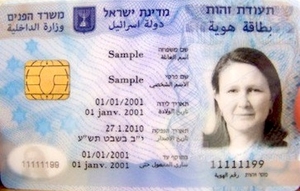 A sample blue Israeli ID card. |
Husbands and wives: Under a family reunification program in place from 1967 until mid-2003, Israel allowed West Bankers and Gazans married to Israeli citizens – almost all Arab – to enter Israel and acquire permanent residency. Estimates of the total number of spouses permitted to live in Israel vary greatly but are uniformly high for a small country: at least 100,000 (Meron Rapaport), 130,000 in the years 1993-2003 (Carolyn Glick), more than 137,000 (a Jerusalem Post editorial), more than 200,000 in 1993-2003 (another Jerusalem Post editorial), and 250,000 in 1963-2021 (Kohelet Forum).
Whatever the number, Israeli authorities eventually noticed that a seemingly minor humanitarian gesture had turned into a back-door ideological Palestinian "right of return." One indication of its political nature: requests for Israeli citizenship overwhelmingly came from West Bank or Gazan husbands joining Israeli wives, a stark contrast to the normal patrilocal Palestinian practice of wives moving to their husbands.
This awareness led to the passage in 2003 of the "Citizenship and Entry into Israel Law" that blocked Palestinians who marry Israelis from entering the country. Children of such unions were allowed to live in Israel until they reached 12 years of age, when they had to leave the country. Only the interior minister could make exceptions, granting citizenship to individuals who "identify with Israel," who make economic or security contributions, or for visits with medical or employment purposes. The 2003 law, in other words, permitted Israel to hold out family reunification as a reward, not a right.
Wives also make aliya, if more rarely. Hamas leader Ismail Haniyeh's three sisters Kholidia, Laila and Sabah married Israeli Muslim men and moved in the 1970s from Gaza to Tel Sheva, a mainly Bedouin town in Israel. "In a small community like ours there were not enough women to go round, so some of the men would go and look for wives elsewhere," explained a relative. Compounding the irony, some of their children have served in the Israeli army. The wife of Ahmed Tibi, a former Israeli Arab advisor to Yasir Arafat and a member of the Israeli parliament since 1999, moved to Israel and received citizenship.
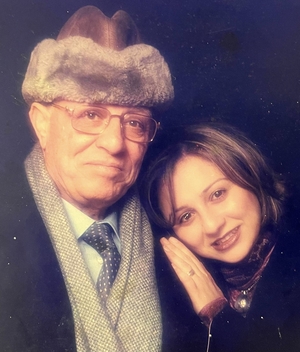 Ahmed Qurei and his daughter Mona. |
Workers: The large disparity in work conditions and remuneration between the West Bank and Gaza on the one hand and Israel on the other makes the latter an extremely attractive destination for everyone from day laborers to permanent immigrants and unskilled laborers to professionals. The numbers of workers permitted into Israel depends in part on economic factors and in part on security ones, and therefore it has fluctuated considerably. In a revealing 2024 statement, the secretary-general of the Palestine Labor Union, Shaher Sa'ad, estimated that more than 120,000 Palestinians possess Israeli work permits – in addition to about 45,000 illegals. He also revealed that the latter spend $400 for a ladder to climb over the security fence and about $600 to be smuggled in by car.
PLO fighters: In 1970, more than two hundred PLO fighters escaped Jordanian forces by crossing into the West Bank, where they surrendered to the Israelis. In 1982, another group fled the PLO's rule in Lebanon by going to Israel. In 2007, the Fatah vs. Hamas fighting in Gaza prompted as many as one thousand Fatah fighters to seek refuge in Israel; one of them, waiting at the border with his wife and children, explained to a reporter, "We cannot live in Gaza. Even if I have to sleep here for a year, I will." In 2008, 188 Fatah troops received permission, after laying down their arms, to flee to Israel where they were handcuffed and strip-searched, then allowed in on a humanitarian basis. But their leader, PA head Mahmoud Abbas, ordered them returned to Gaza, despite the danger, to send a signal of defiance by maintaining a presence in Gaza. One of those troops complained, "Hamas will kill us immediately. It will be a death verdict for us if we go back there."
Beneficiaries of good-will gestures: To strengthen the PA's Abbas, Israel at times permits Palestinians to move to the West Bank or allows illegal migrants to gain permanent residency. An estimated 41 Palestinians from Iraq (out of a total population thought to be about 34,000) did so in 2007, then the numbers jumped: 4,495 in 2008 and 5,000 in 2021. Sometimes, Palestinians are allowed into Israel proper: 3,458 in 2009 and 442 in 2021.
Rumors swirled in 2008 that Prime Minister Ehud Olmert offered to take in 2,000 Palestinians a year for ten yearson a basis of family unification, should all the other issues be resolved with the PA, as compensation for the PA foregoing a "right of return" to Israel. Olmert's office denied this report, but Abbas later confirmed it.
 Albait Almukhtalef's logo. |
Informants: Israeli intelligence depends on a wide network of informants, many of them Bedouin; when exposed or in danger of exposure, it may move them to Israel. In one large-scale operation, as Israeli forces withdrew from Gaza in 2005, they evacuated about 250 agents from Dahaniya village, promising them compensation and help with resettlement. The agents' spokesman, Abed Shtawi, talked hopefully of his "future as a Bedouin and an Israeli citizen." In 2008, a number of Gazans living in the Israeli town of Sderot explained what made them switch sides and their appreciation of the Jewish state.
- "I'm very happy that I helped the state of Israel. Here everything is straightforward, not like with the Arabs. Here there is a law and there are rights."
- "When the Israelis ruled Gaza people lived like kings."
- "The only choice is an Israeli military occupation to clean the area [Gaza] of weapons."
Criminals: Some shady Palestinians take extraordinary steps to access Israel. Israel's police in July 2001 accused a Palestinian businessman with a criminal record of fictitiously marrying a new Russian immigrant to obtain Israeli citizenship. It also recommended charging Salah Tarif, a Druze government minister (for Arab affairs) in the Labor government, with "facilitating a bribe and breach of trust" in exchange for legalizing the man's status.
Political murderers: In April 2002, a Palestinian with an Israeli identity card carried out a suicide bombing, killing 14, at a Haifa restaurant; he could pass through military roadblocks separating Israel from the West Bank by carrying an Israeli identity card and driving a car with Israeli license plates – both issued because his mother was an Israeli Arab. This was the worst but hardly the first such atrocity; already, 87 Israelis had been killed in 19 attacks that in one way or another involved West Bankers or Gazans outfitted with Israeli identity cards who had the run of the country. Yuval Diskin, head of the Shin Bet, reported in 2005 that of 225 Arabs involved in terror, 25 (or 11 percent) were Palestinians who had moved to Israel on the basis of family reunification.
In conclusion, those Palestinians who vote with their feet show an appreciation for Israel that more than balances the horrid things said about it by their chieftains, even when those chieftains are their brother.
Others
Egyptians: In 2009, Egyptian officials estimated that about 20,000 Egyptian citizens had gone to work in Israel and married Israelis, mainly Muslim women. In 2017, an Egyptian community leader in Israel told Haisam Hassanein of the Washington Institute for Near East Policy that they numbered 3,000 to 7,000 persons, mostly spouses of Arab Israelis. Most of them are legal, but illegal migrants have also entered the country, usually to make money. Hassanein finds that most Egyptians prefer not to obtain Israeli citizenship, "as this would make their return to Egypt impossible and endanger their Egyptian citizenship." That same year, the community founded a non-profit to represent its interests.
Notable Egyptian-Israelis include the afore-mentioned Yusuf Samir; his Israeli-born daughter Chaya, one of the first Muslim women to enlist in the Israel Defense Forces and later a well-known singer; Naglaa Suleiman, who won the Arab Miss Israel contest in 2009; and Noha Hashad, a professor of nuclear science in Egypt who escaped after her pro-Israel views landed her in prison and tortured. Majed El Shafie, born to a prominent Muslim family, converted to Christianity at 18 while in law school and wrote a book about the difference between Islam and Christianity. Also imprisoned and tortured, he escaped by making his way to Taba near the Israeli city of Eilat. El Shafie recounts a somewhat implausible James-Bond-style passage to Israel via the Red Sea:
It is patrolled by both Egyptian and Israeli boats, and either of them will shoot you. But at about 5:30 one day I stole a jet ski and I crossed the border on a jet ski. There is only one way you can get away with doing that, and that's by coming between the two boats – that way they won't shoot because they don't want to shoot each other. That's how I was able to do it. I got to Eilat and ran into the Princess Hotel where I asked for asylum.
Ibrahim Shahin, a Jerusalem-born Muslim fled to Egypt following the 1948 war with Israel, married Inshirah, an Egyptian, lived in El-Arish, and had three sons – Nabil, Muhammad, and Adel. After Israel's capture of El-Arish in 1967, the entire family spied on Egypt for Israel. Caught in 1974, Ibrahim was executed, but Inshirah was eventually pardoned and moved to Israel with her sons, where they all converted to Judaism and adopted Hebrew names. "I love being Jewish, the whole family is Jewish," says Nabil, now Yossi Ben-David. His son, Daniel, concurs: "I am Israeli and Jewish and nothing will change that."
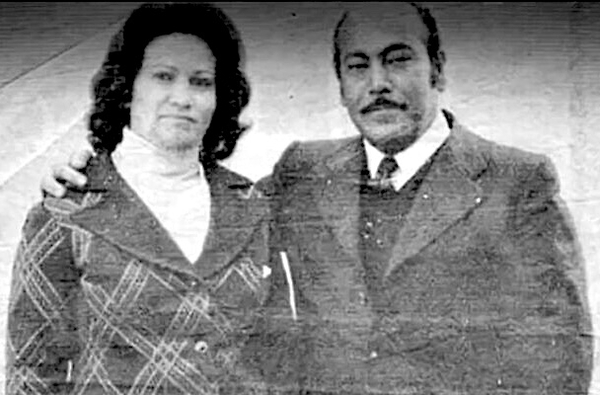 Nabil (R) and Inshirah Shahin. |
The six hundred members of the Azzama, a Bedouin tribe, differed greatly from these elite individuals. The tribe fled Egypt in 1999 to escape a feud with another tribe and ill-treatment by the Egyptian police. Despite an Egyptian official's efforts to convince them to return to Egypt, they sought residential rights in the Jewish state. Similarly, hundreds of Bedouin from the Sinai peninsula gathered in 2007 at Egypt's border with Israel, asking for refuge in Israel on the grounds that Egyptian authorities had mistreated their community.
Africans: I covered this topic in detail in a separate article, "Muslim Africans' Harrowing Journey to Israel" (Middle East Quarterly, Summer 2023). To summarize: They nearly all reached the Jewish state by land via Egypt during the years 2006-12, often enduring a horrible experience at the hands of either Egypt's authorities, the tribes, or Hamas, leaving many immigrants traumatized, brutalized, or murdered. The total number of illegal migrants to Israel from sub-Saharan Africa is estimated at 55,000, with about 25,000 now in the country.
Individuals and families: Israel faced a curious invasion in March 2001. A family of sixteen Iraqi Kurds, including four children, after living in Beirut for three years without decent work, hired a taxi to take them to the border with Israel. Once there, this group of unarmed Muslims cut through the wire fence separating the two countries and walked into Israel waving a homemade Israeli flag. The family asked for asylum, was refused, and threatened mass suicide. Israelis publicly fretted about the morality of expelling them, but the authorities forced them across the Lebanese border a day later, leaving the Kurds stuck in a no-man's-land, unable to enter Israel and fearful of returning to Lebanon. Eventually, the story ended happily with their winning asylum in Sweden.
This incident might appear to be eccentric, but it is not, for Iraqi Kurds have often tried to enter Israel. A party of forty-two tried this in early August 2001, ten more then tried later in the same month, and the pattern has often repeated itself since.
A year after the Israeli retreat from Lebanon in 2000, four South Lebanese men crossed into Israel, requesting political asylum; turned down, they returned to Lebanese territory – despite three of them having previously been jailed in Lebanon for "collaboration with the Israelis." With time, it became routine to hear the IDF spokesperson make announcements such as, "Yesterday afternoon (August 24, 2003), an IDF force arrested a Lebanese citizen crossing the international border into Israel. An inquiry carried out by security forces concluded that his intentions were not terror related." He was returned to Lebanon. At certain times, for instance mid-2006, the Israeli border guards apprehended about 600 illegal migrants a day.
The case of Ibrahim Yassin, a Shiite who became Rabbi Avraham Sinai deserves special mention. His connection to Israel began in 1983 when Yassin, 19, was a cattle farmer in south Lebanon. As his wife went into labor, an IDF officer, Tzachi Bareket, took risks to help her delivery and subsequent recuperation. Grateful, Yassin in turn provided the Israelis with occasional information on the PLO – until Hezbollah suspected him, arrested him, tortured him, and murdered his child. For vengeance, Yassin joined Hezbollah and became a major intelligence asset for Israel, finally fleeing to the Jewish state in 1997, where he converted to Judaism and became a Haredi rabbi living in Safed. His son Amos went on to be a decorated soldier in the Golani Brigade's Battalion 51. Asked about Israel and Lebanon, Abraham replied, "Here it's heaven, there it's hell."
 Rabbi Avraham Sinai (L) and his son Amos look toward the Israel-Lebanon border. |
His case fits a pattern. "About 1,000 times a year," estimates Seth Farber, the director of an organization that assists people to navigate the bureaucracy of Jewish life in Israel, illegal migrants seek to stay in Israel by converting to Judaism. They must prove their sincerity by being interrogated by a committee of government authorities – Interior Ministry lawyers, Prime Minister's Office representatives, and Conversion Authority rabbis. The committee decides whether the applicant genuinely intends to convert or is gaming the system to stay in the country.
Luckier illegals get jailed in an Israeli prison devoted specifically to such immigrants. Muhammad Mashah, a Jordanian journalist who fled to Israel because he criticized both Jordan's king and Palestinian violence, sought political asylum in Israel and declared himself almost happy in an Israeli jail: "I just want to live like a human being."
Khudia Raisi walked to Israel from his native Iran through all of Turkey, Syria, and Lebanon because of his "problems with the regime." One Iranian dissident wrote that "Israel is my dream," and in 2020, during the height of the pandemic, Israel's Foreign Ministry reported a dramatic increase in queries about Israel and in requests about moving to Israel. Indeed, the Jewish state remains a distant aspiration for many Iranians. Yet further away, Pakistani authorities reported indicting a group of seven of its nationals who had lived in Israel for years, working at menial jobs and sending remittances home. Reports also surfaced about the disappearance of four or five Muslim tourists from Kerala, India during a tour of Israel in 2023.
Large groups: In December 1999, as negotiations about the Golan Heights returning to Syrian control became serious, at least 2,000 of the 15,000 Druze residents there made plans to move to Israel proper. The head of one village council explained: "many people here won't want to live in a Syrian Golan. ... people want quality of life – and they know what Israel has to offer and what Syria has to offer."
The largest single group of Arabs accepted into Israel was the 6,500 mostly Christian members of the South Lebanon Army who fled to Israel along with the retreating Israeli forces in May 2000; the number of Muslims among them is unclear. A mid-2001 report estimated that 40,000 Jordanians entered Israel as tourists in 2000 but stayed on illegally to work at higher-paying jobs in the Jewish state. When, for security reasons, Israeli authorities rounded up those Jordanians for overstaying their visas, with plans to repatriate them to Jordan, one worker responded with outrage:
I came to Israel five years ago to improve my economic situation. I later married in an Arab villager and now I have two children. I submitted my documents to the Palestinian Authority in order to have legal recognition as a Palestinian whose family moved to Jordan, and I want to stay here. But the Israeli authorities insisted on deporting me to Jordan.
Conclusion
The large-scale influx of Muslims to the Jewish State of Israel began with the origins of the state and has continued until the present. It has several implications. First, growing numbers has cooled their reception. As Israel emerged as an economic success story, Israelis became more wary of non-Jewish immigrants, seeing them as the thin edge of the wedge of uncontrolled influx. What will remain of the Jewish state? Some voices began to worry about an "existential threat" to the country.
Second, Muslim aliyah contributed very substantially to the number of Israel's Muslim citizens. Looking over the nearly two centuries since its takeoff in the 1840s, I estimate that today, three-quarters of them are immigrants or the descendants of immigrants.
Third, although some immigrants have malign intentions – murder in particular – most seek a better life by making more money, uniting with a fiancée, seeking freedom, or even joining the Zionist experience, flocking (as American journalist Joseph Farah puts it) "to the tiny Jewish state from virtually every Arab and Muslim land in the world." The Jerusalem Post notes, "Though viciously demonized by the Arab media, Israel curiously remains an attractive destination." What ever the specific motive, the general point is clear: Zionism has attracted and benefited Muslims as well as Jews.
Mr. Pipes (DanielPipes.org, @DanielPipes) is president of the Middle East Forum and a senior fellow at the Center for Immigration Studies. He mentioned this article as forthcoming in 2007. © 2024 by Daniel Pipes. All rights reserved.
[1] Macalister writes that they "form the majority of the inhabitants of the villages north-west of Galilee, are probably long-settled immigrants from Persia."
[2] Roughly analogous to gypsy.
[3] DNA research as yet has little to say about the Canaanite/Jebusite claim. One study led by Lily Agranat-Tamir found a majority of genes among both Jews and Levantine Arabs, including Palestinians, share a link to the ancient Canaanites. Another, headed by Michal Feldman, found that the Philistines came from southern Europe, including the present-day Spain, Sardinia, and Greece. The Feldman study prompted Netanyahu to conclude that "There's no connection between the ancient Philistines & the modern Palestinians, whose ancestors came from the Arabian Peninsula to the Land of Israel thousands of years later. The Palestinians' connection to the Land of Israel is nothing compared to the 4,000-year connection that the Jewish people have with the land."
* A reader points out that context makes clear that "the river of Egypt" here cannot be the Nile but most likely a minor waterway around Gaza such as Wadi el-Arish or Nahal Besor.
Sep. 1, 2024 addendum: For more on the genetic questions, see Diana Muir Appelbaum and Paul S. Appelbaum, "The Gene Wars," Azure, Winter 2007. Excerpts:
What can we say, then, about the claim that genetic science has proven that "Palestinians are, in most cases, descended from the old Hebrew tribes"? Or about the alternative formulation that the Palestinians' "ancestors, the Canaanites, were the original inhabitants of the land"? In short, existing genetic data lend no support whatsoever to these assertions.
there is no basis for the belief that Palestinians are descended from the Hebrew tribes.
genetics seems unlikely to contribute much to the resolution of contending claims of territorial sovereignty.
Dec. 12, 2024 update: Dirgham Al-Fares, director-general of the PA Ministry of Culture and Antiquities, has turned Palestinians into both Stone Agers and Jews:
The Palestinian people are a direct continuation of the original inhabitants from the Stone Age to the present. The Palestinian people were pagans who worshipped El, Baal, Ishtar, and Anat, and they developed the concept of God and adopted the Jewish religion, Christianity, and Islam. Therefore, the Palestinian people own the land and history, and all the antiquities in it are the property of the Palestinian people.
Dec. 31, 2024 update: I quoted above two Columbia University professors; here's a third, Joseph Massad.
The idea that European Jews are somehow direct descendants of the ancient Hebrews is, of course, a bogus claim. Even if some Jews believed somehow [they had] some lineage – at least a religious or spiritual lineage [to ancient Hebrews] – by the 17th century and 18th centuries, the idea among European Christians would become important, especially to estrange European Jews from Europe, and they begin to case them as "Asiatics," people who have come from Asia originally. ...
What is special here about Zionism is not only the invention of Ancient Israel and the invention of Jews as descendants of the Ancient Hebrews – it is almost like a Hitlerian project to speak of Jews genetically in this fashion. It only becomes fashionable, of course, in the 19th century, with the rise of racial science and the biological sciences. Israeli propaganda often claims that the Palestinians, today, are somehow descendants of Arab settlers, who had come with the Arab-Islamic conquest of Palestine – that, of course, is not true at all. ...
Of course, they mythology also includes aspects of the invention of ancient Israel. ... This is all a game of archeology, and we know archaeology, of course, is part of colonialism. This is a science that begins in the last 18th century and early 19th century, as part of the colonial venture. ...
It is strange that ... Palestinians are the only people unable to claim the ancient Hebrews as their ancestors, because some strange European group is claiming them as their ancestors.
Jan. 16, 2025 update: Majed el-Shafie, mentioned above and now the president of the Toronto-based One Free World International, returned to Israel to make a 70-minute documentary film, "Dying to Live: The October 7 Massacre." "God used Israel to save my life. I felt that after Oct. 7 I had to do something. I had to return the favor."
May 28, 2025 update: Salim Al-Zre'i, a Fatah Revolutionary Council member: "The Crusaders were here for 200 years, the Turks for 400 years, and they all left, and then the Palestinian people arrived."
Oct. 24, 2025 update: In a 1930 speech, former British prime minister David Lloyd George spoke about the government's unequal attention to two types of immigration to Palestine:
There is criticism of the Jews because some of them went there temporarily and remained, attracted by the country. It is suggested that 7,000 people went there and remained there, without any certificate. There is no proof that they were Jews, but it is assumed that they were. There is not a word said about the thousands of Arabs who have been doing the same thing. Fourteen thousand Arabs had percolated through from Syria. Had they got certificates? Why should there be this mention of the fact when Jews managed to get in, and not a word about the Arabs getting in?
H/t: Douglas Feith.